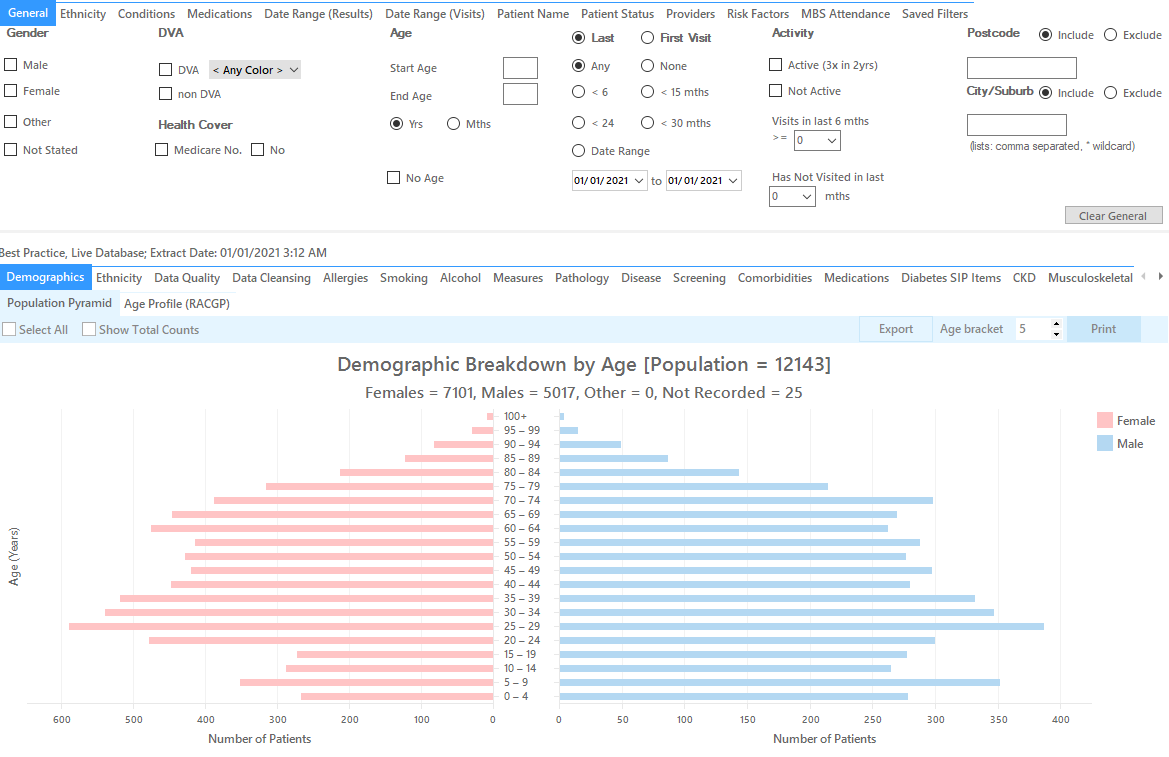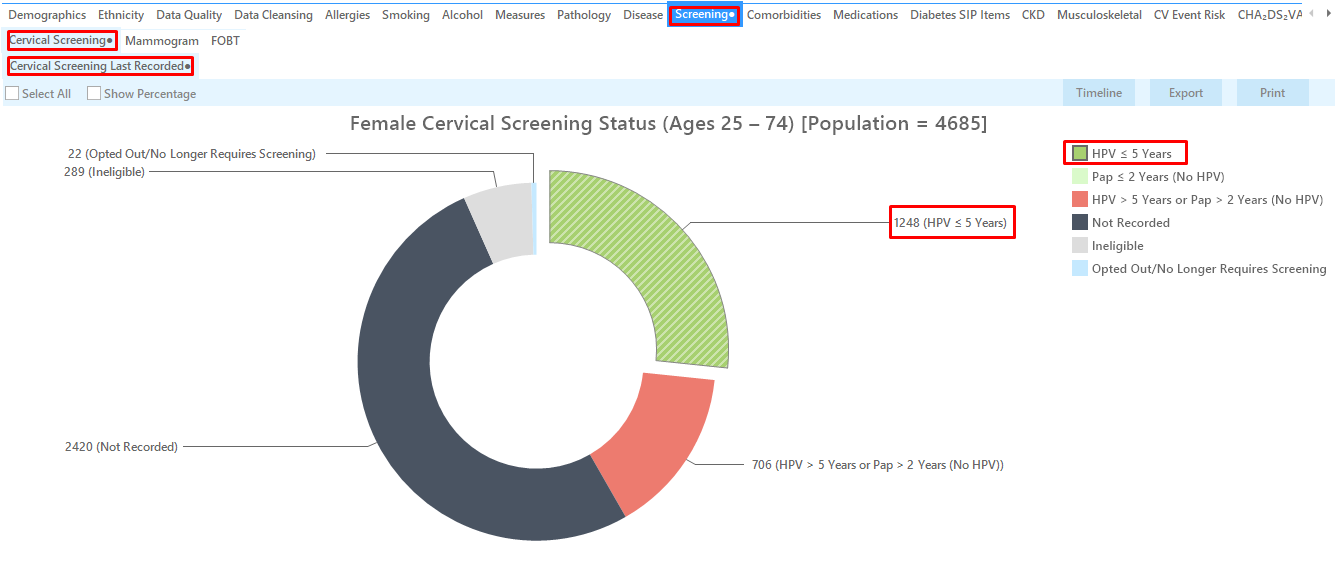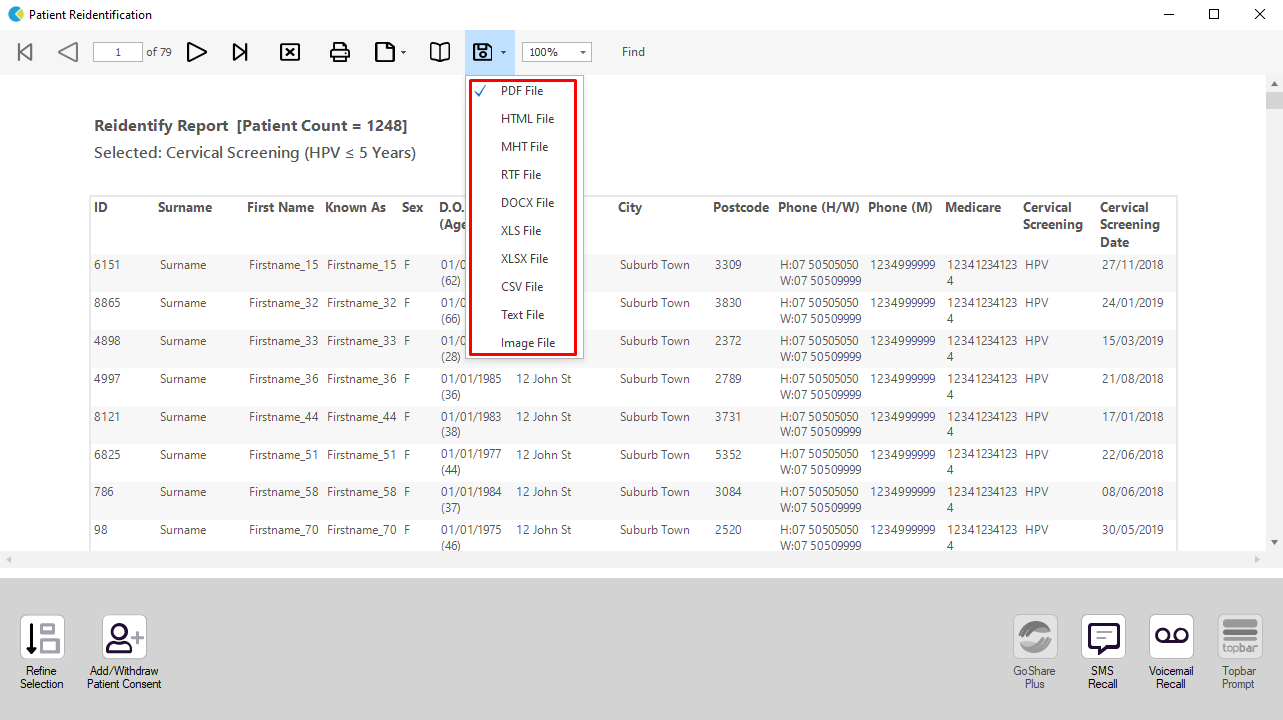Recipe Name: | Female patients who have not had a cervical screening test |
Rationale: | Australia has established a new cervical screening process based on recommendations by Australia’s independent Medical Services Advisory Committee (MSAC). This new test regime has commenced on the 1/12/2017. MSAC also advised that
For full information on the new test please check here: http://www.health.gov.au/internet/screening/publishing.nsf/Content/healthcare-providers |
Target: | Eligible female patients for a cervical screening test |
CAT Starting Point: |
|

RECIPE Steps Filters:
As the new test has just been introduced, there is a transition phase for some time. You can use the filters (for age and/or attendance) to specify which group of patients you are interested in.
You don’t have to filter for gender or age as CAT will do this automatically for the cervical screening report
If you have applied a filter:
Recipe Steps Reports


To Export Patient List to Microsoft Excel:
1. Click on the “Export Icon” ![]() at the top of the Patient Reidentification window.
at the top of the Patient Reidentification window.
2. Click on “Excel”
3. Choose a file name and a location to save to (eg. Create a folder C:/ClinicalAudit/CAT Patient FollowUp)
4. Click “Save”
The steps above will produce a list of patients with contact details in MS Excel which can then be used to:
1. Go back through the individual patient records in the GP Clinical Desktop System (CDS) and update known records
2. Phone patients to update their record
3. Produce a mail merge to recall patients for follow up